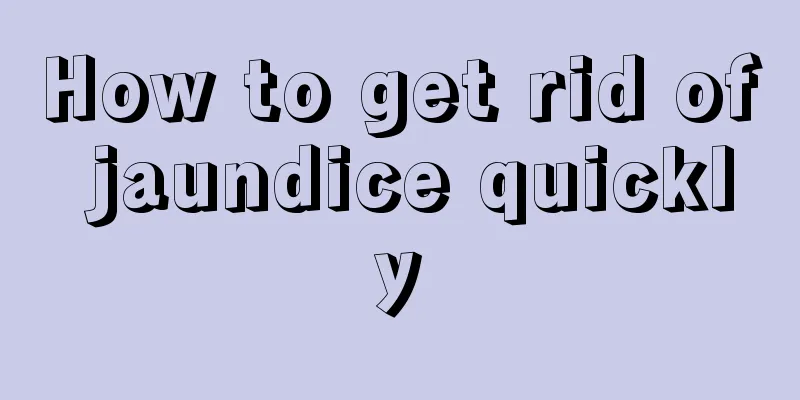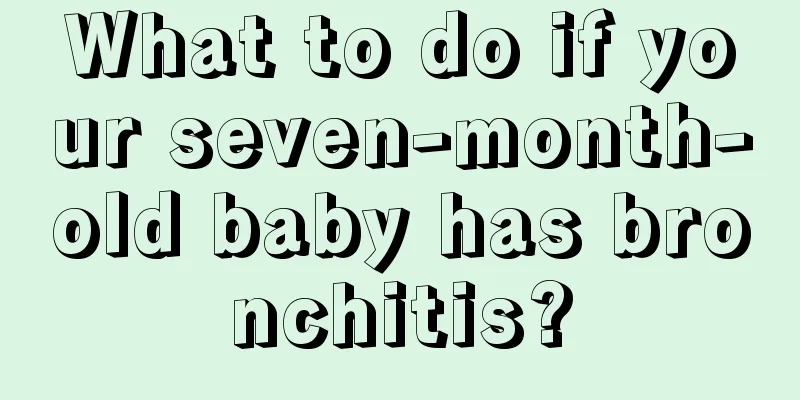What to do if your child has nosebleeds in autumn

|
Many people feel that autumn is a good season with clear and cool weather. However, autumn is particularly dry, with strong winds and sandstorms, and the temperature is unstable and fluctuates greatly. This often causes nosebleeds in some children, because children's physical development is not yet complete and their resistance to larger external stimuli is relatively poor. Therefore, parents must take good care of their children in the autumn. Why do children have nosebleeds in autumn? Epistaxis in children often occurs in the front and lower part of the nasal septum. There is a vascular network composed of arteries and veins in the front and lower part of the nasal septum. The mucosa here is thin and the veins have no valves. It is medically called the nasal bleeding area. Because of its forward location, it is easy to bleed when impacted by external force. There are many reasons for nosebleeds, both local and systemic. Local causes include nasal trauma, vestibulitis, nasal foreign bodies, nasal hemangioma, etc.; systemic causes include upper respiratory tract inflammation, aplastic anemia, thrombocytopenic purpura, cirrhosis, vitamin C deficiency, hemophilia, leukemia, etc. When a child has a nosebleed, parents should not panic. The child should be placed in a sitting or semi-sitting position, with the head slightly tilted forward. The child should not be placed in a supine position, nor should the head be tilted back, to prevent blood from choking the respiratory tract. If blood flows into the pharynx, irritating the pharynx and coughing will aggravate the bleeding. At this time, you can apply a cold towel to your head and apply slight pressure on the wings of your nose with your fingers for 3 to 5 minutes. You can also use sterilized cotton dipped in 0.1% epinephrine solution or Yunnan Baiyao to fill the nasal cavity for 10 minutes, and then gently remove the cotton. Finger pressure hemostasis If there is a small amount of bleeding in the front of the nasal septum or occasional bleeding with a small amount, finger pressure can be used to stop the bleeding. Use your thumb and index finger to pinch the nostrils on both sides and apply pressure for 5-10 minutes. During the pressure period, you can also apply a cold towel, cold water bag or ice bag to the patient's forehead and back of the neck to promote vasoconstriction and reduce nose bleeding. Nasal packing hemostasis When the patient has a heavy nosebleed, nasal packing can be used to stop the bleeding while preparing to go to the hospital. Gently pack the patient's anterior and posterior nares with tightly rolled gauze or cotton strips, and pinch the two nostrils tightly with the index finger and thumb to apply pressure to stop the bleeding. When inserting the gauze or cotton strip, be careful to leave a little bit of it exposed outside to facilitate removal. What should children eat to reduce internal heat when they have nosebleeds? 1. Give your child some mung bean soup or mung bean porridge. Mung bean is cold in nature and sweet in taste. It can cool down and detoxify, clear away heat and relieve irritability. It is most suitable for babies with bad temper and upset. 2. Let more children eat some fruits, such as grapefruit and pear: they are cold in nature and slightly sour in taste. In addition to clearing away heat, they can also moisten the lungs. They are very suitable for babies with lung heat, cough, yellow sputum, and dry and sore throat. Water chestnut: It is slightly cold in nature and rich in juice. It is very suitable for babies who have residual heat after a fever, such as irritability, thirst, mouth sores, dry stools and yellow urine, etc. Star fruit: It is cold in nature, tastes sour and sweet, and can clear away heat and promote salivation. It is most suitable for babies with excessive internal heat and oral ulcers. 3. Eat more heat-clearing vegetables, such as cabbage: it is slightly cold in nature, and has the effects of clearing away heat, relieving restlessness, and promoting bowel movements. Celery: It is cold in nature, can remove liver fire and relieve heat in the lungs and stomach. It is beneficial for babies who are prone to "getting angry" to eat it regularly. Lettuce: It is slightly cold in nature, crisp and tender in texture, and rich in water. Its effects are clearing heat, relieving gas, and resolving phlegm. Suitable for babies with heat in the lungs and stomach. Water chestnut: It is cold in nature and suitable for babies with symptoms of heat in the heart meridian, irritability, thirst, dry stool and yellow urine. It has the effect of clearing away heat and detoxifying. |
<<: What should children eat when they have nosebleeds?
>>: Causes of nosebleeds in children in spring
Recommend
Massage techniques for newborn baby's crooked neck
We all know that newborns may have some deformiti...
Home prevention and treatment of mycoplasma infection in children
Children have weaker resistance and are most vuln...
What to do if a 5-year-old child has a picky eater
A 5-year-old child has a certain cognitive abilit...
What to do if the baby has hydroscrotum
Many parents want to give birth to a little boy, ...
One-month-old baby's hands and feet are cold
We all know that babies who have just turned one ...
Avoid 6 common mistakes when drinking juice for babies
Fruit juice is a beverage with high nutritional v...
What is the reason for the baby's lung noise when coughing?
The physical health of the baby during the growth...
What to do if your child's face is bruised
When the baby is around two years old, his bones ...
What food should children with indigestion eat?
Many children often suffer from indigestion due t...
What should I do if my two-year-old baby has a high fever?
Some babies have health problems, so they need to...
Is it okay to bathe a five-month-old baby frequently?
When the baby is five months old, he is already q...
What causes frequent urination in six-year-old children?
If a 6-year-old child has frequent urination, on ...
Why do children love to drink water?
Many mothers will find that their children have s...
There is a white spot on the buttocks of the newborn
When white spots appear on the buttock groove of ...
Will children with roseola become sleepy?
Roseola is a common problem in children, but we a...








![Precautions for child safety seats [Hot Mom Baby]](/upload/images/67cc3f0dac9bc.webp)
